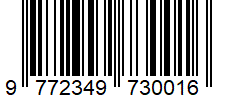Impact of Self-Help Groups on Socio-Economic Development of Women in Assam : A Review of Studies
Authors: Md Anowarul Islam, Mr Manik Narzary
Country: India
Full-text Research PDF File:
View |
Download
Abstract: Poverty in India is rampant with one-third of world’s poor. Impact of SHGs had been proposed as a pilot but now it has become a revolution in rural economy and has been playing an important role for alleviation of poverty in rural poor especially the disadvantageous sections of the society namely women, small and marginal farmers and landless farmers. As a measure of financial inclusion India’s world rank is 4th with 135 million people. NABARD, in 1992 launched a scheme to organise poor people into a group of 10-20 persons and linking the group with the banks. The idea of SHG was originally conceived and implemented by Bangladesh Grameen Bank but now the concept has been adopted by almost all the third world countries that has boosted the rural economy of their countries. The scheme covers only the marginal group of people with equal economic status and deposit a monthly equal share into the bank in a regular interval to form the habit of banking, small savings and being acquainted with banking and financial policies. The banks under SGSY schemes sanctioned loans to the groups with government subsidy to undertake different income generating schemes to boost their economic conditions. The present paper intends to explore and review the various aspects and impacts of SHGs on socio-economic development of women, studied under different renown researchers.
Keywords: Financial Inclusion, Self-Help Group, SHG, Women Empowerment, Marginal Section
Paper Id: 1234
Published On: 2021-09-05
Published In: Volume 9, Issue 5, September-October 2021





 All research papers published in this journal/on this website are openly accessible and licensed under
All research papers published in this journal/on this website are openly accessible and licensed under 